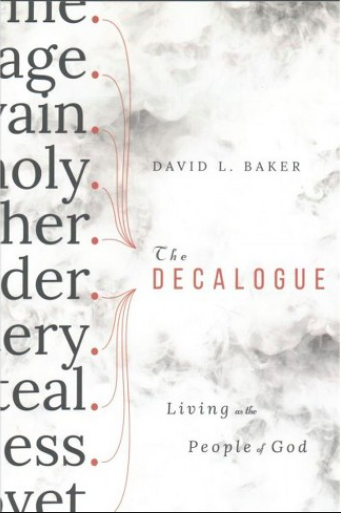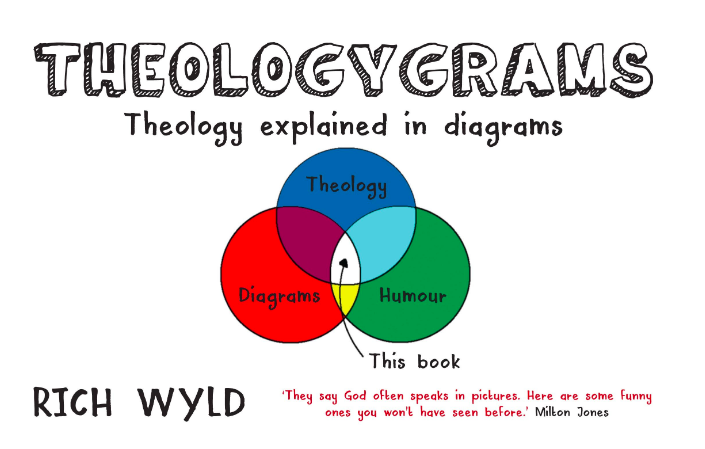We’ve come along way from the giving of the Ten Commandments (AKA, the Decalogue or the Ten Words). Do we still need them? Are they still relevant? Who doesn’t know that murder is wrong? If so many don’t believe in God, why have them around anyway? Should we enforce them as laws?
The Decalogue consists of two groups of five commandments concerned with loving God (1-5) and loving one’s neighbor (6-10). In his book, the Decalogue, David Baker believes the Decalogue “expresses the essence of the covenant but is not a treaty document in itself” (12). There are strong parallels between the commandments of the Decalogue and that of other ANE treaties (e.g., not to commit murder, adultery, theft, etc.). However, other ANE texts are not “as comprehensive in scope as the Decalogue” (19). The ethical appeals of the Decalogue are grounding in God’s character and how he says his “holy nation” should live to be holy as he is holy.
The Decalogue was spoken by God to all of Israel, the “whole people of God” (32). Baker believes it is Israel’s constitution. Far from being a burden to slog through life under, it (and the Book of the Covenant in the following chapters of Exodus) is their “charter of freedom to be embraced and celebrated,” as Psalms 19 and 119 point out (35).
After his introduction, Baker gives a chapter to each commandment, setting each of the ten commandments against their surrounding ancient Near Eastern cultures to compare and contrast the uniqueness of God’s instructions to his people. He then reflects on how that commandment was (or wasn’t) lived out through examples in the OT and NT. Baker makes comparisons with the Decalogue that is repeated in Deuteronomy 5, noting any changes and why they might have been made.
In his final section he looks at how we, as Christians, the people of God, should live in light of Jesus’ death and resurrection. He says that the Decalogue is the basis for Old and New Testament ethics. It reveals the character of God to us, and from there we can explore the rest of the Bible to see what he is like.
Lagniappe
- Author: David Baker
- Paperback: 240 pages
- Publisher: IVP Academic (April 3, 2017)
- Press Kit available here
Buy it from Amazon.
Amazon Affiliate Disclosure: As an Amazon Associate I earn from qualifying purchases.
A picture is worth a thousand words, and often a picture is easier to look at than 1,000 words. Rich Wyld has created a host of diagrams to help distill some of theology’s deeper points into forms that visual people can digest. Until I get permission to share some pictures, I’ll share some links to his blog. Some of these from his blog are found in his book, others are not. Wyld begins with (1) the Old Testament, then moves to (2) the Gospels, (3) the rest of the NT, (4) the life of the church, and he ends on (5) the life of the church.
In section 4, Wyld, an Anglican, uses references mostly from the Anglican church, but tries to be fair when representing other churches too. Some sections found here are:
- A “breakdown of time spent during a hymn”
- “Ministry in the church” (those being pastors and teachers, evangelists, prophets, apostles, and people who hoover and make tea).
- And the very humorous looks at “what’s going on in the mind of the person reading the Gospel in church,” which, if you’ve ever had to read in front of a crowd, you can very well relate.
In section 5, Wyld asks where wisdom can be found, and looks at Proverbs, Jesus, James…and Mr. T.
Some examples which can be found on his blog are:
- Micah 6.8
- Revelation infographic
- Why the other disciples could have been miffed with Judas
- Bible wear and tear
- St. Paul’s Wrath-o-meter for reading Galatians
- Theology Research Paper Title Generator
Bible references are provided for most pictures. The intention isn’t only to be silly, but to provoke thought and have the reader go back to the Bible to read that verse or section again. The intention isn’t to mock or belittle God, his creative works, nor his redeemed people.
Lagniappe
- Author: Rich Wyld
- Paperback: 160 pages
- Publisher: IVP Books (November 14, 2017)
- Press Kit available here
Buy it from Amazon
Review Disclosure: I received these books free from IVP Academic and IVP Books. The opinions I have expressed are my own, and I was not required to write a positive review. I am disclosing this in accordance with the Federal Trade Commission’s 16 CFR, Part 255 http://www.access.gpo.gov/nara/cfr/waisidx_03/16cfr255_03.html.
Amazon Affiliate Disclosure: As an Amazon Associate I earn from qualifying purchases.




Reblogged this on Talmidimblogging.
LikeLike